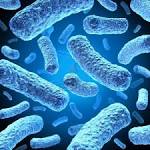
There are many different types of bacteria which may be classified according to their physical characteristics and how they interact with the environment and other living things. The most important aspect in learning about bacteria is to know that although many of these can cause harm, there are many bacteria that can also be beneficial to man.
Do You Know There Are Different Kinds of Bacteria?
1. Beneficial Bacteria
Although most people are afraid of getting in contact with bacteria, some types of bacteria are actually helpful to one's health and their presence may be needed in the body to prevent disease. In general most of these bacteria consist of:
Lactobacilli, which are rod-shaped, Gram-positive bacteria normally found in the human intestine, vagina and mouth. Their presence prevents the overgrowth of harmful bacteria in these body parts by producing lactic acid. They are also found in fermented milk products such as yogurt and may be taken as part of a healthy diet to maintain a normal amount of probiotics in the body.
Bifidobacteria are also rod-shaped (branched) and Gram-positive bacteria, and they are similar to lactobacilliin terms of probiotic benefits, including preventing diarrhea and yeast infection.
Escherichia coli are rod-shaped, Gram negative microorganisms which help breakdown undigested sugars in the intestine, thus aiding digestion. They also produce biotin and vitamin K which are important to many cellular processes.
Other helpful bacteria found in the environment include Streptomyces, Rhyzobia, and Cyanobacteria, which help maintain a healthy habitat for man by preventing the proliferation of harmful bacteria, as discussed above.
2. Harmful Bacteria
Some of the harmful types of bacteria are those which can cause disease or adversely affect one's health, and these mainly include:
Mycobacteria, which are rod -shaped, and neither Gram-positive nor Gram-negative microorganisms that can cause infections of the lungs, skin and other parts of the body. The most common diseases associated with these bacteria are leprosyand tuberculosis.
Clostridium tetani are Gram positive rods that infect the skin and gastrointestinal tract, causing tetanus, which can lead to death.
Yersinia pestis are Gram negative rods which infect the skin and lungs, leading to bubonic and pneumonic plague. It is also now considered as a potential biological weapon.
Helicobacter pylori are a common type of bacteria associated with gastric and peptic ulcers. Although almost half the world's population may harbor these harmful bacteria, some do not manifest symptoms.
Bacillus anthracis are Gram-positive rods which occur in many animals like goats, sheep and cattle, but it may be transmitted to humans, causing abdominal problems including diarrhea.
Note: Hans Christian Gram, a Danish scientist, distinguished two types of bacteria based on the structure of bacteria cells. The Gram-positive bacteria refer to those with thick layer of peptidoglycan which will retain violet dye; the Gram-nagative bacteria refer to those which will not retain the violet dye and are red or pink in color.
